At 691 feet and 53 stories, Winthrop Center, a recently completed glassy mixed-use tower in Boston, developed by Millennium Partners and designed by Handel Architects, is now the tallest in the downtown core. It surpasses—though by just a few feet—the height of an earlier collaboration between the developer and Handel, Millennium Tower, a nearby condo building completed in 2016.
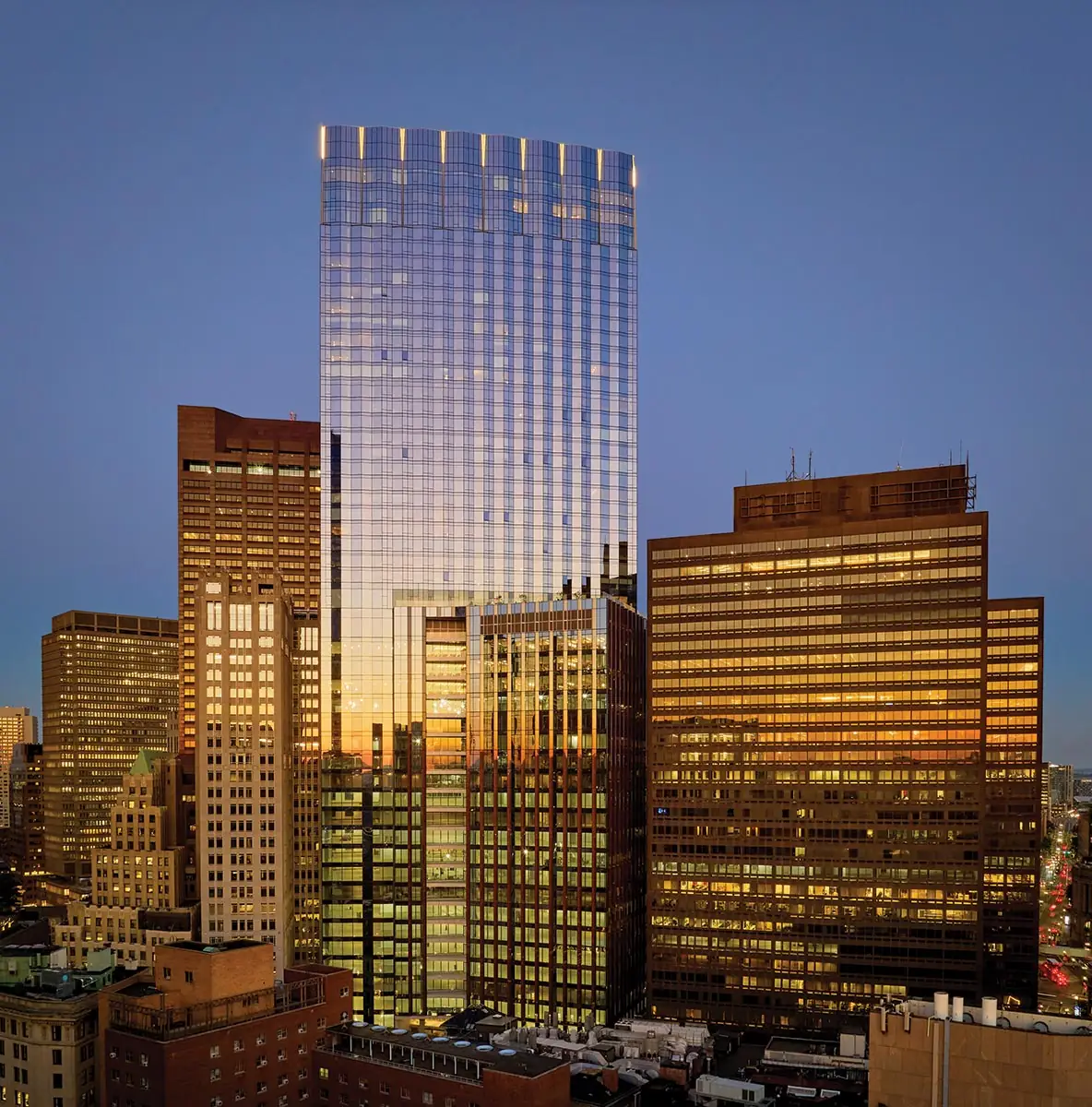
Winthrop Center makes its mark on the skyline with a fluted crown. Photo © Bruce T. Martin, click to enlarge.
The newer tower’s base contains 812,000 square feet of office space on 20 floors and, at ground level, a semipublic civic-scale room, nearly three stories tall and 200 feet long, dubbed the Connector, which links Devonshire and Federal, the streets that are the site’s east and west boundaries. From its T-shaped lower half, a 26-story pleated shaft rises, housing 317 high-end condos. The tower culminates in a subtly fluted crown highlighted by nighttime illumination. The scheme takes its cues from the Art Deco buildings interspersed among the financial district’s eclectic architectural mix, says Blake Middleton, Handel’s partner in charge of the project.
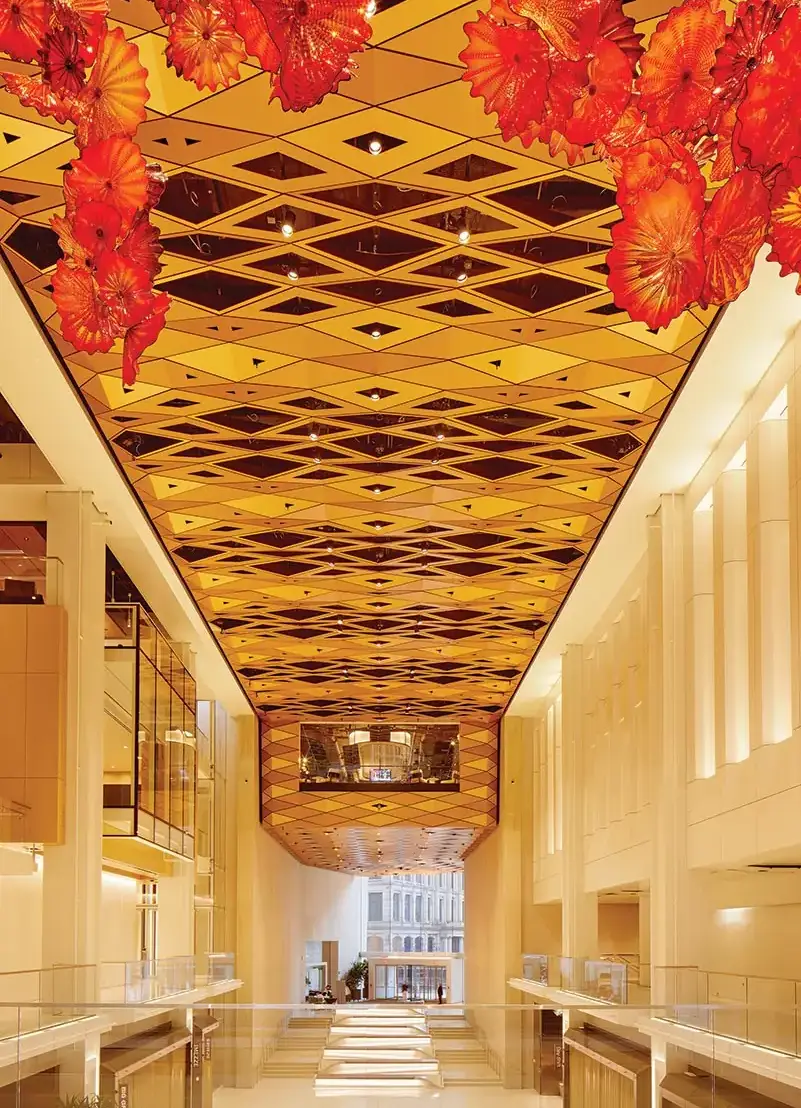
At the ground, a 200-foot-long civic-scale space houses eateries and retail. Photo © Bruce T. Martin, click to enlarge.
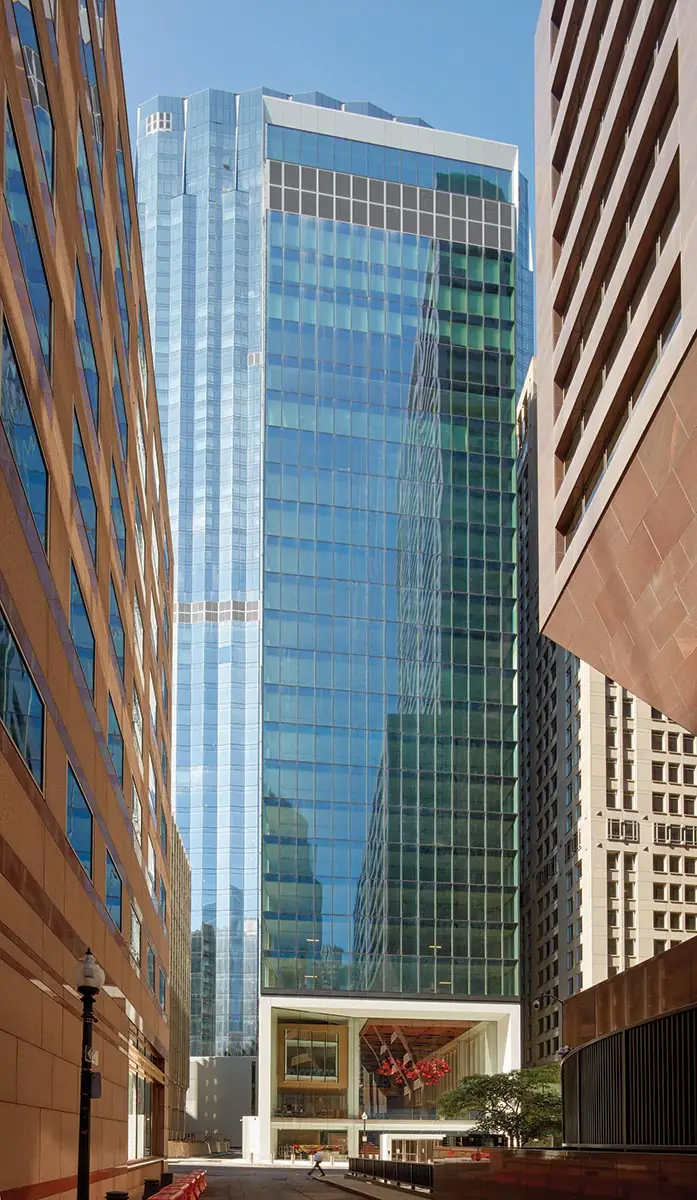
On the tower’s west face, the office levels are expressed with a flat, taut skin. Photo © Bruce T. Martin
Winthrop’s presence on the skyline, however, is not what makes it remarkable. The $1.3 billion, nearly 1.9 million-square-foot development, which sits on the former site of a city-owned parking garage, is instead most notable for its long list of green credentials: its residential portion is on track for a LEED Gold rating, while the office space is targeting WELL Gold and LEED Platinum and has already garnered Passive House certification. It is this last achievement that is the most impressive—at least at this scale. On its own, the workplace portion of the complex is the world’s largest Passive House office building.
What is “Passive House”? It is a methodology focused almost exclusively on energy efficiency (compared to LEED, which covers additional aspects, such as water conservation). Known as Passivhaus in Germany, where it was first developed, the standard, which is applicable to any building type (not just residential construction, as the name would seem to suggest), seeks to minimize energy expended for heating and cooling. Its tenets include an extra-insulated, airtight building envelope with minimal thermal bridging, ultrahigh-performance windows, and mechanical ventilation with heat recovery.
Millennium says that its use of the standard at Winthrop has produced a radically efficient building: a typical Class-A office building in Boston’s existing stock uses 150 percent more energy than Winthrop’s office floors, while LEED Platinum buildings in the city use 60 percent more energy. In addition to these savings, the developer touts other benefits, including improved indoor air quality. The ventilation system brings in 30 to 50 percent more fresh air than in a standard building of this type.
Handel has a long record with Passive House projects at scale. When it was completed seven years ago, the House, a 352-unit residence for graduate students at Cornell Tech on New York’s Roosevelt Island was the largest and tallest residential building in the world built to Passive House standards. Among Handel’s current projects is Sendero Verde, a 709-apartment affordable-housing complex in the Bronx, which will be the country’s largest Passive House development when completed later this spring.
Passive House was new to Millennium, but the developers recognized the standard as an opportunity. “We saw Passive House as a key market differentiator,” says Brad Mahoney, the company’s director of sustainable development. The approach, Millennium reasoned, would have particular appeal to companies with ambitious environmental, social, and governance (ESG) goals. Tenants started moving in this past summer, and leasing activity is strong, according to Mahoney, with 60 percent of the office area occupied by or committed to by firms in industries such as banking, investing, and management consulting. A January Boston Globe article referred to one recent deal for office space at Winthrop as one of the “few bright spots amid an overall gloomy picture for Boston’s office market.”
There are, of course, other attributes attracting companies to Winthrop, including the more than 38,000-square-foot office floor plates whose long spans and T-shaped footprints lend themselves to flexible layouts in “neighborhoods”; 12-foot ceilings and nearly full-height windows; east-facing terraces on each floor; and shared amenities including coworking spaces, a coffee shop, and a fitness center. The ground-floor Connector, which is open to workers from surrounding buildings as well as to the general public, also offers retail and food options and is envisioned as space that will host activities such as farmers markets, concerts, and other cultural activities. (On level 26, the condominiums have their own set of amenities, such as an indoor lap pool, a residents-only bar and restaurant that opens onto a landscaped terrace with views over the Charles River and Back Bay, a wellness center, and even a pet-grooming service.)
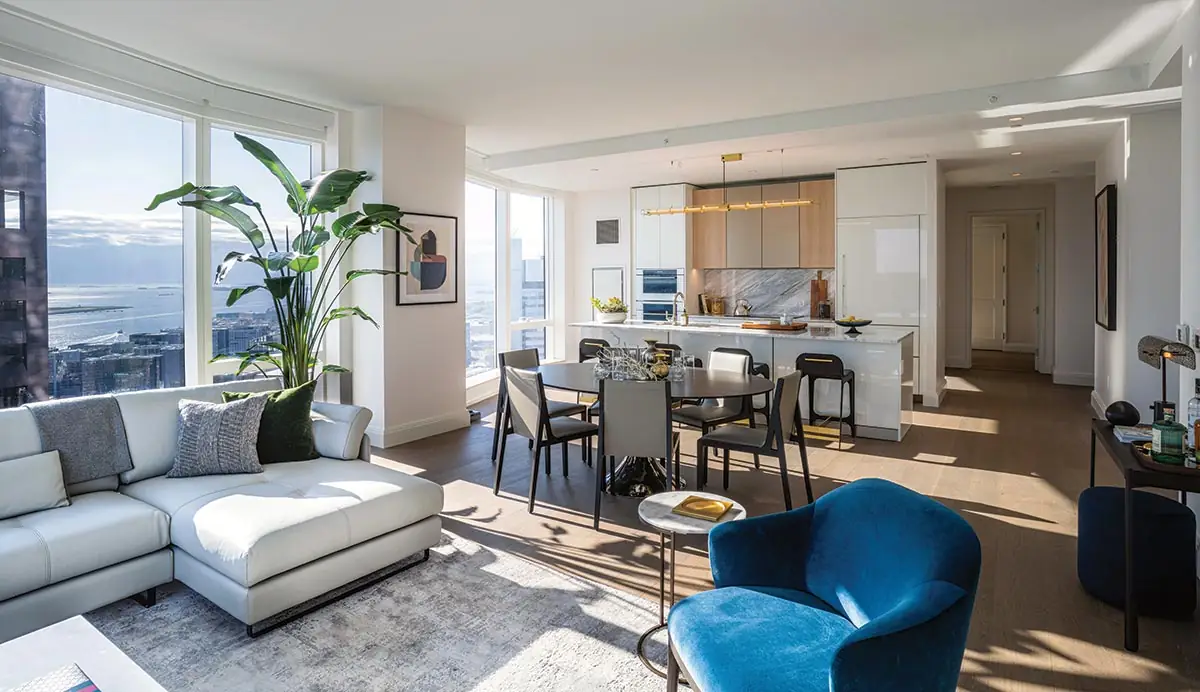
The condos, on the top 26 floors, capture dramatic views. Photo courtesy of Millennium Partners
The Passive House attributes are probably indiscernible to Winthrop’s tenants, including the energy-saving features of the building’s enclosure: while the residential levels are wrapped in a mostly conventional double-glazed unitized curtain wall, the system on the office floors includes argon-filled triple-glazing with a two-layer low-E coating. The mullions are a hefty 12 inches deep to support the extra weight of the additional lite and incorporate thermal breaks. And, though Winthrop appears to be an all-glass building, much of the enclosure—especially on those faces that are obstructed by adjacent buildings—is a high-performance assembly of spandrel glass backed by a generous amount of mineral wool insulation and a continuous air barrier. All in all, vision glass makes up only about 44 percent of the office portion’s building envelope, says Middleton.
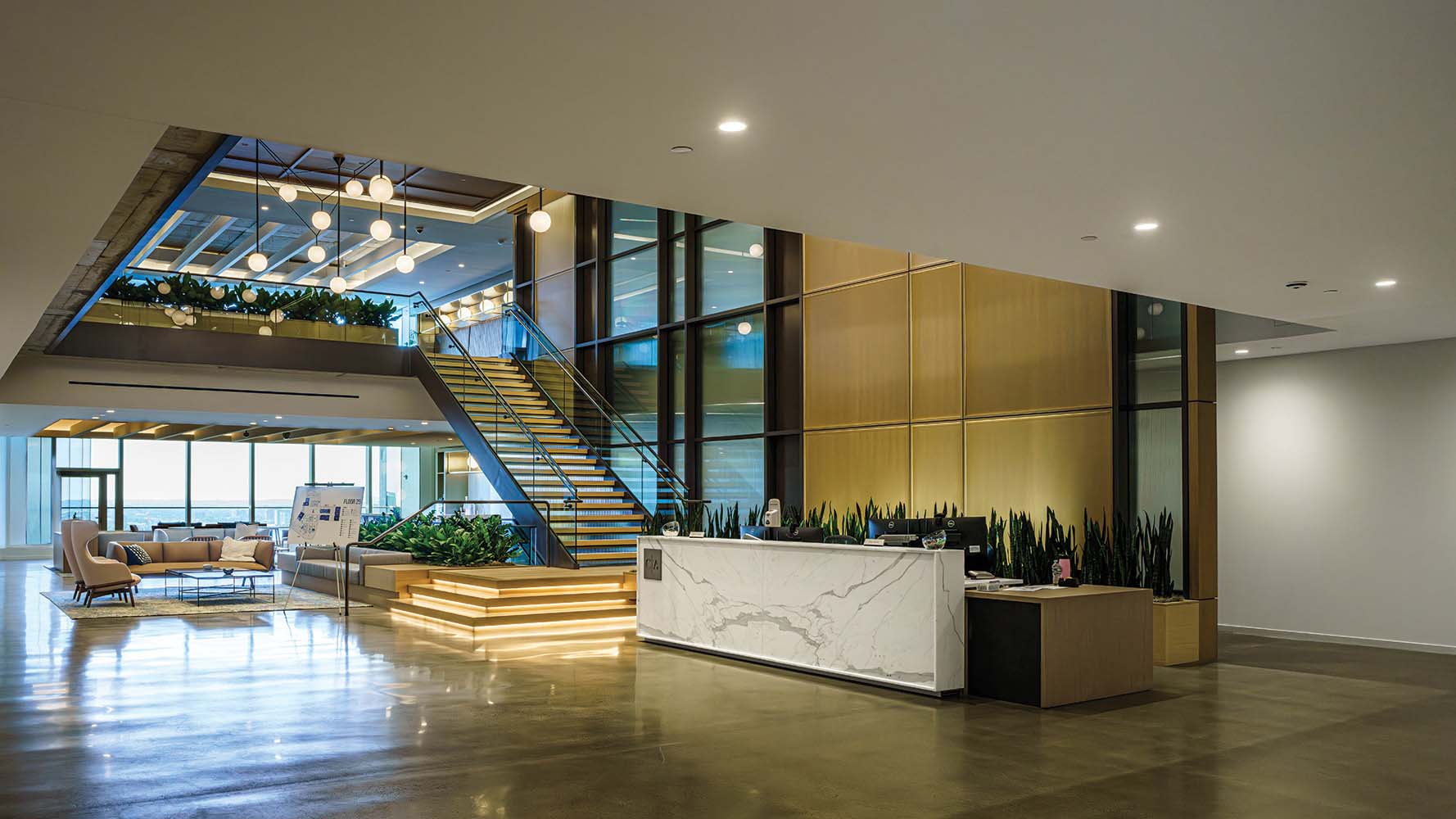
A number of tenants have leased multiple floors, connecting them with communicating stairs, including one office by IA Interior Architects. Photo courtesy of Millennium Partners
Another hidden aspect is the energy-recovery ventilators (ERVs), which bring in fresh air, exhaust stale air, and capture heat for reuse. Passive House buildings typically depend on mechanical equipment that has already been certified as complying with the standard’s requirements. But, due to the project’s size, Winthrop needed custom ERVs—four of them—which entailed lengthy and detailed performance testing to demonstrate compliance. Dylan Martello, senior building-systems consultant at Steven Winter Associates, the project’s Passive House specialist, notes that the units are “massive,” which challenged the team to create space for them within the building’s footprint.
The project’s Passive House ambition also necessitated some inventive project phasing. For instance, to demonstrate airtightness, Passive House requires a blower door test, which is typically performed after completion on smaller projects. But here, the test was performed floor by floor, with contractors carefully sealing off the locations of the still-in-use construction hoists. They also conducted intermediate testing on individual components, such as windows. The process, says Martello, “was much less risky than waiting until just before everyone moved in.”
Millennium’s focus on Passive House at Winthrop has proved prescient, helping advance the strategy as a mainstream market solution. “We felt it was the best approach for moving the needle,” says Mahoney, adding that the project “further opens the conversation for other building types to pursue Passive House or Passive House methodologies.” Indeed, just last year, Massachusetts adopted new code provisions that essentially require Passive House design for multifamily buildings over 12,000 square feet, in the majority of jurisdictions in the state, including Boston. The provisions also include the Passive House standard as a compliance path for all other typologies. “This building,” says Middleton, “became a catalyst for change.”
click drawing to enlarge
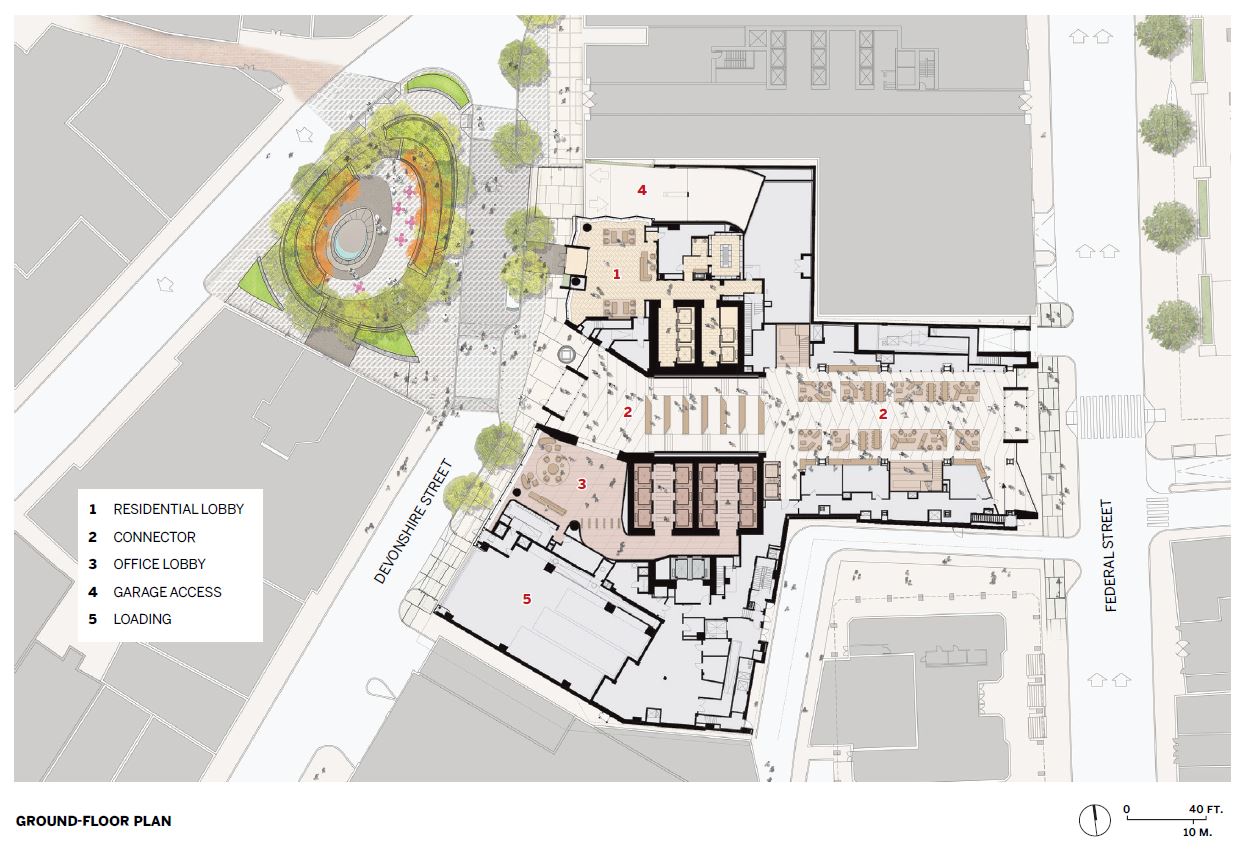
click drawing to enlarge
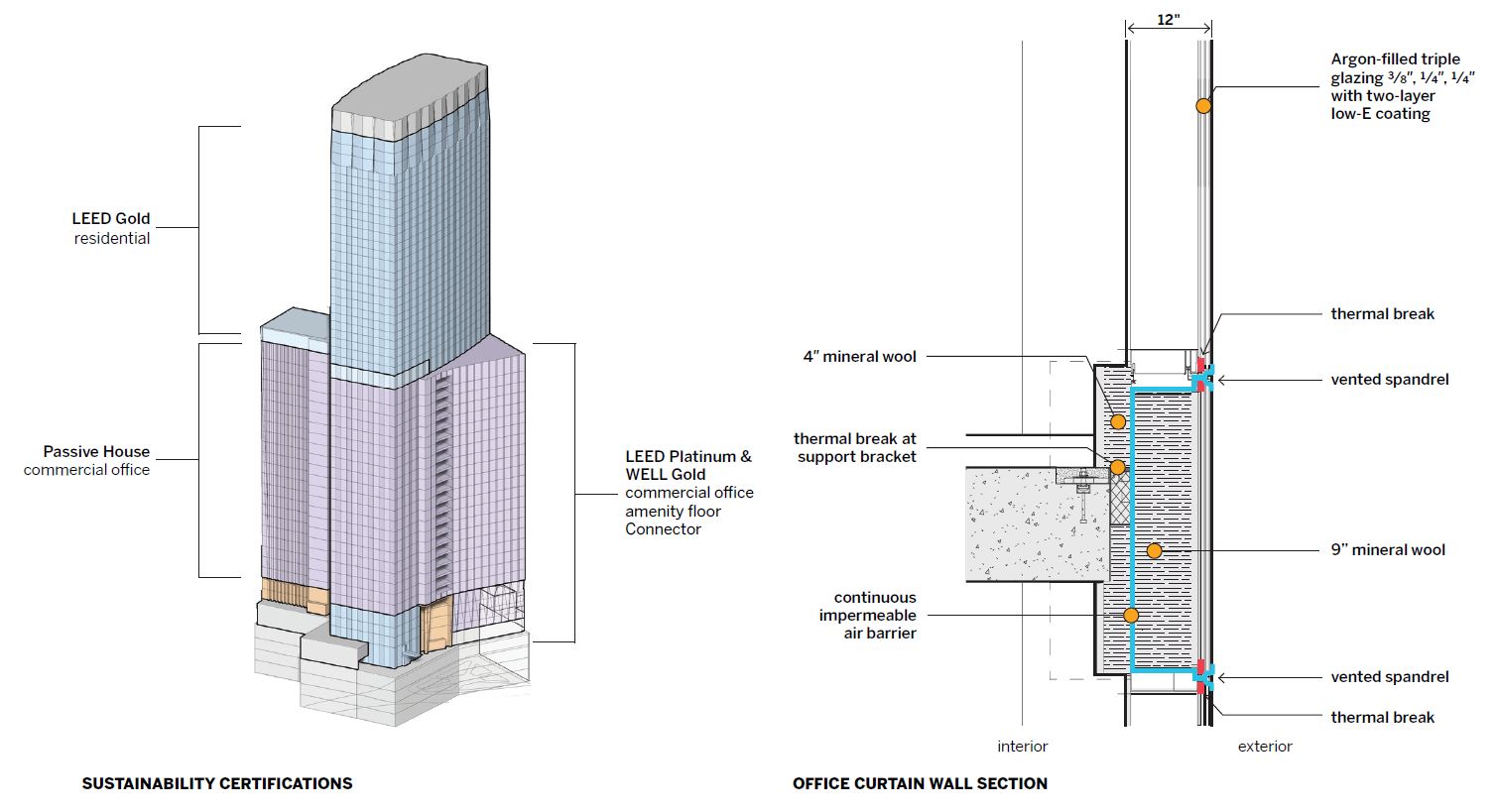
Join RECORD on April 17 at the Massachusetts Institute of Technology’s MIT Media Lab for Sustainability in Practice, a special half-day event with featured speakers including Carol Ross Barney, Mario Cucinella, Felix Heisel, and David Lake and Ted Flato.
Credits
Architect:
Handel Architects — Gary Handel, managing partner; Blake Middleton, partner in charge; Glenn Rescalvo, partner in charge (interiors); Kevin Samuels, project manager
Associate Architect:
DREAM Collaborative
Engineers:
DeSimone Consulting Engineers (structural); WSP-Built Ecology (m/e/p); Haley & Aldrich (underground engineering, environmental science, management consulting); Steven Winter Associates (Passive House, energy, sustainability, accessibility); Nitsch Engineering (civil)
Consultants:
Ground Inc. (landscape); Lam Partners, Tillotson Design Associates (lighting); SOCOTEC (building envelope)
General Contractor:
Suffolk Construction
Client:
Millennium Partners Boston
Size:
1.9 million square feet
Cost:
$1.3 billion
Completion Date:
June 2023
Sources
Glazing:
AGC Interpane
Curtain Wall:
Sotawall
Limestone:
Vetter Stone
Vertical Transportation:
Schindler



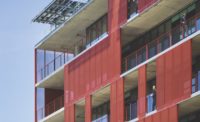

Post a comment to this article
Report Abusive Comment